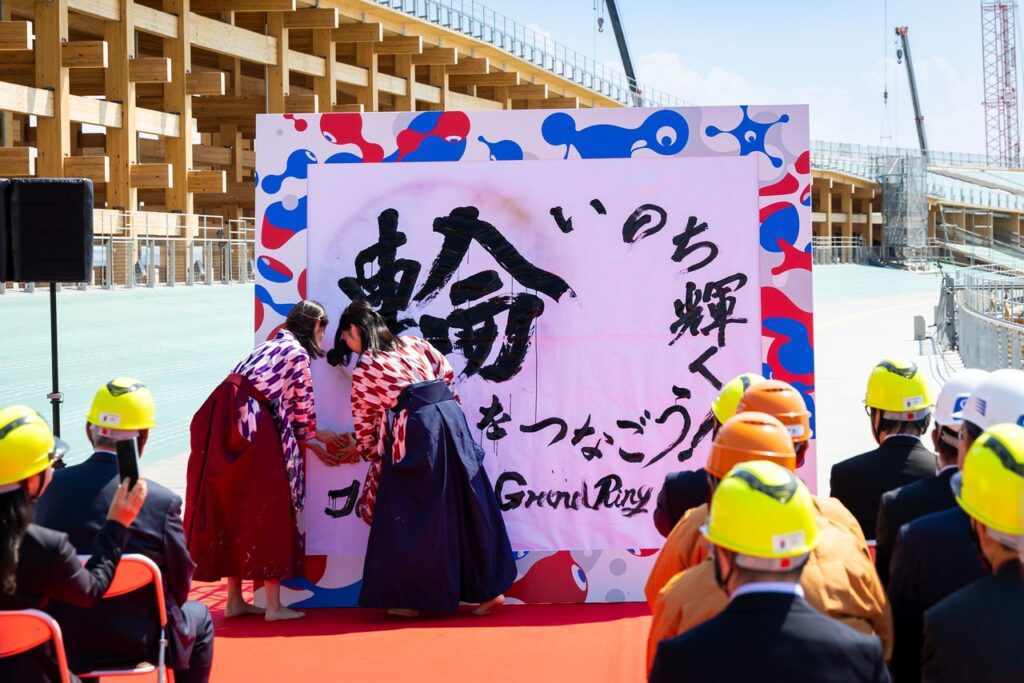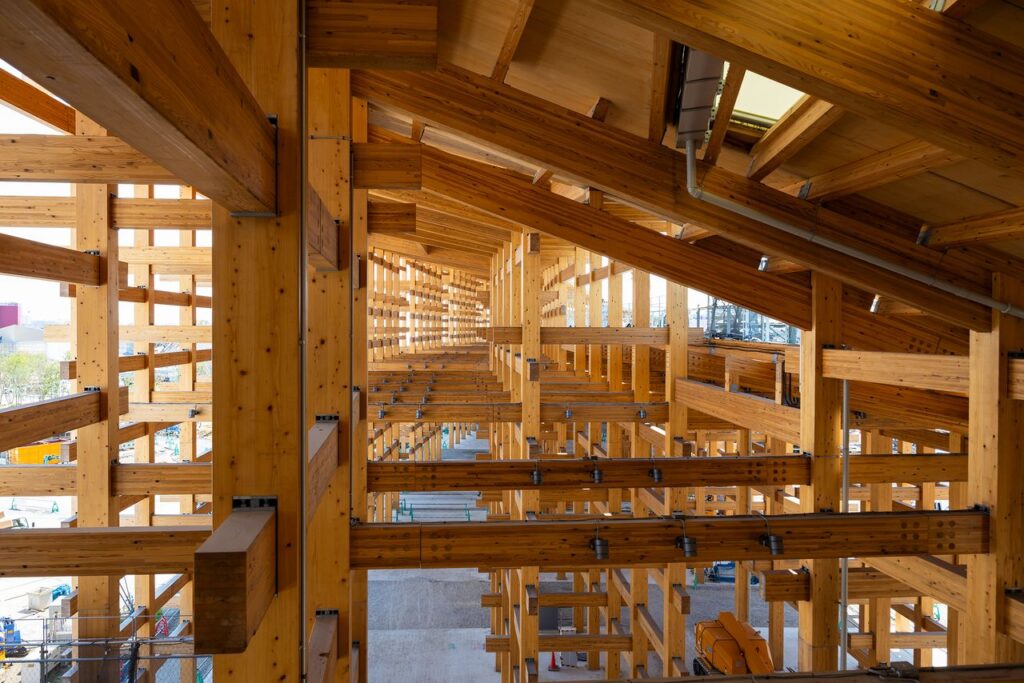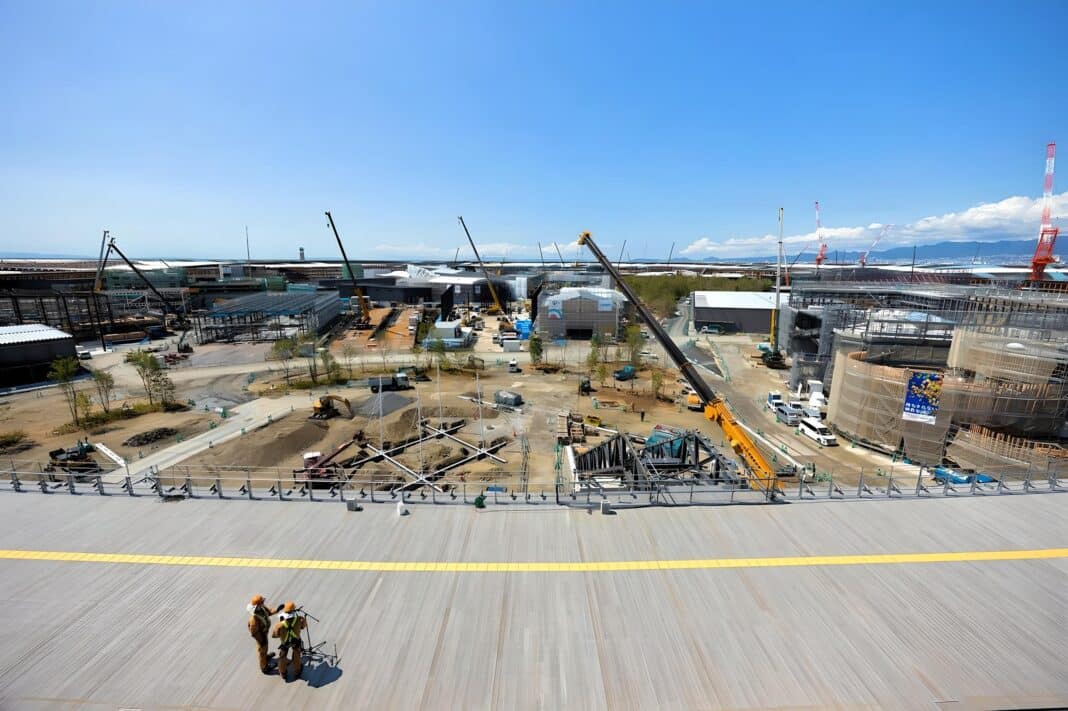With less than 200 days to go before the start of the World Expo, the first to be held in Japan since 1970, work is now starting on more than 157 different pavilions and exhibits, including the 12-metre-high “Ring Skywalk” and “Ring Ground Walk,” which encircle the 2km giant timber ring that has now “clicked into place.”
It comes as members of the Expo’s organising committee, including Expo design producer and architect Fujimoto Sō, Osaka governor Yoshimura Hirofumi, and Tokura Masakazu, chair of the Japan Association for the 2025 World Exposition, last week reiterated that the grand ring—one of the world’s largest wooden structures ever constructed—would be dismantled and reused on new projects.

Built by three of Japan’s largest contractors—including Obayashi Corp, Takenaka Corp, and Shimizu Corp—the all-timber roof has a 2 km circumference, 20 metres of height, and an 8-metre walkway and uses more than 27,000 cubic metres of engineered wood products.
Wood Central understands that a large section of the structure was built from timbers from Namie, Fukushima, an area that was especially hard hit by the 2011 Great East Japanese Earthquake and tsunami.

“At Expo, people from diverse backgrounds and countries will come together under a common goal to create the future,” according to Mr Fujimoto. “Completing the Grand Ring is the first step toward that.”
“The Expo’s focus is not the ring, but the pavilions that the ring encircles. Each country will make its wonderful contribution. We can now see the ring’s role in bringing this all together.”

Dubbed “the most expensive parasol in the world,” the project has nonetheless been shrouded in controversy. Construction delays, surging material costs, and labour shortages have resulted in Expo costs spiralling out of control (to more than US $1.5 billion).
The Expo will run from April 13 through October 13, 2025, and will welcome a projected 28 million visitors. Once the Expo is over, the grand ring will be dismantled, with organisers inviting local bodies, construction companies, and others to submit proposals to reuse the material.
The roof is supported by a traditional Japanese ‘nuke’ technique—which involves joining horizontal beams and vertical pillars together—used in the famed wooden stage inside the Kiyomizudera temple in Kyoto.
- To learn more about the Giant Ring, click here for Wood Central’s special feature.






